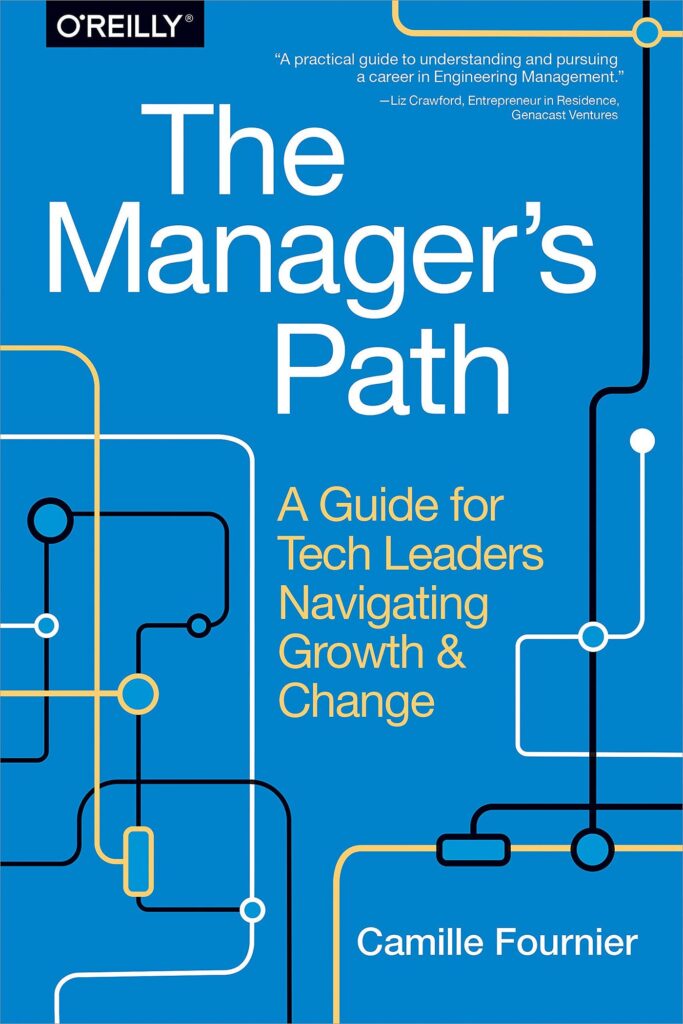
1 Line Summary
“The Manager’s Path” is a book written by Camille Fournier that provides practical strategies for navigating the various stages of management in the technology industry.
What Will You Learn
Here are some specific benefits of reading the book, you’ll learn how to:
- set clear expectations, give effective feedback, and motivate your team,
- build a strong team culture and create a positive work environment,
- navigate the challenges of growth and change,
- succeed in the industry.
Best Quotations from the Book
- “The bedrock of strong teams is human connection, which leads to trust. And trust, real trust, requires the ability and willingness to be vulnerable in front of each other.”
- “Figuring out what to do in a workplace is hard enough for experienced hires, so it’s an especially tall order for an intern. Give them a clear set of expectations, and make sure they have the resources they need to succeed.”
- “There’s nothing worse than feeling like you can’t make a single decision on your own, or feeling like every single piece of work you do has to be double- and triple-checked by your manager. Give your team the autonomy they need to succeed.”
- “Don’t rely exclusively on consensus or voting. Sometimes, you need to make a decision and move forward. If you’re always waiting for everyone to agree, you’ll never get anything done.”
- “The earliest startup is like driving a race car. You’re close to the ground, and you feel every move you make. You have control, you can turn quickly, you feel like things are moving fast. As the company grows, it’s like driving a bus. You’re further from the ground, and you have less control. You have to make bigger decisions, and you have to think more about the long-term.”
Key Takeaways
Here are some of the key takeaways from the book:
1. Technical Excellence and Leadership Balance
- Cultivate a strong foundation of technical skills to gain the respect and trust of your team.
- Transition from individual contributor to manager by blending technical expertise with leadership abilities.
- Understand the technical work your team undertakes and effectively communicate with them.
2. From Engineer to Manager
- Embrace the shift from coding to overseeing projects and people.
- Learn to delegate effectively, enabling your team members to take ownership and contribute meaningfully.
3. One-on-One Meetings and Feedback
- Conduct regular one-on-one meetings to build strong relationships with team members.
- Provide constructive feedback and guidance to foster growth and development.
4. Communication and Alignment
- Prioritize open communication and transparency to ensure everyone is informed and aligned.
- Clearly articulate the team’s goals, vision, and priorities.
5. Guiding Technical Decision-Making
- Lead your team in making well-informed technical decisions by asking the right questions and considering trade-offs.
- Balance short-term needs with long-term technical strategy.
6. Tech Lead Skills and Roles
- Develop tech lead skills by taking ownership, making architectural decisions, and mentoring others.
- Understand the different roles within a tech team, such as project managers, engineering managers, and tech leads.
7. Mentorship and Growth
- Provide mentorship to help your team members advance in their careers.
- Support growth by offering stretch opportunities and continuous learning.
- Promote a diverse and inclusive environment by actively addressing bias and fostering belonging.
8. Adapting to Change
- Embrace the fast-paced nature of the tech industry by cultivating a culture of learning and adaptation.
- Guide your team through transitions and change with resilience and agility.
9. Career Development and Paths
- Help your team members navigate their career paths by providing guidance, support, and opportunities.
- Encourage exploration of different roles within and outside the organization.
10. Interviewing and Hiring
- Develop effective interviewing techniques to assess candidates’ technical and cultural fit.
- Foster a robust hiring process that aligns with the team’s values and goals.
11. Building High-Performing Teams
- Create an environment where individuals collaborate effectively, leverage their strengths, and complement each other’s skills.
- Foster a culture of trust, open communication, and mutual respect.
The book is written for technology leaders, but the strategies and insights shared can be applied to other industries as well.
If you’re a tech professional who wants to take your career to the next level, then you need to read “The Manager’s Path”. This book is packed with practical advice and insights that will help you become a better manager and leader.
Refer Related Summaries:
- “The Lean Manager“,
- “The 5 Levels of Leadership“,
- “The Coaching Habit” and
- “The Five Dysfunctions of a Team“


Pingback: “Energize Your Workplace” by Jane E. Dutton: Book Summary -